Photo-journalism - Fotoperiodismo: Bangladesh - Industry's Victims - The Boston Globe - 21 photos - 08.13
Posted by Ricardo Marcenaro | Posted in Photo-journalism - Fotoperiodismo: Bangladesh - Industry's Victims - The Boston Globe - 21 photos - 08.13 | Posted on 17:07
Industry's Victims in Bangladesh
International attention has been focused on workers' safety in Bangladesh since the disaster at Rana Plaza, a garment factory complex which collapsed in April, killing 1,132 workers. As concern runs high about the safety of garment workers, Reuters photographer Andrew Biraj spent time photographing survivors of the Rana Plaza collapse and also documenting the lives of workers in other industries in Bangladesh, where conditions can be hazardous. -Reuters (21 photos total)

Jesmin,
a 25-year-old survivor from the collapsed Rana Plaza Building, lies on a
bed at the Centre for the Rehabilitation of the Paralysed (CRP) in
Savar, Bangladesh on June 4. Jesmin suffers from a spinal injury and is
waiting for surgery.The April 24 collapse of the Rana Plaza complex,
built on swampy ground outside Dhaka with several illegal floors, killed
1,132 workers and focused international attention on sometimes lax
safety standards in Bangladesh's booming garment industry.(Andrew
Biraj/Reuters)

2
Workers
sort clothes at a garment factory near the collapsed Rana Plaza
building in Savar, Bangladesh on June 16. At least five different
Bangladesh agencies have dispatched teams to start inspecting the
country's thousands of garment factories, but there has been little
coordination between them.(Andrew Biraj/Reuters)#
3
A
relative pours water on 25-year-old Rojina's head at the Centre for the
Rehabilitation of the Paralysed (CRP) in Savar, Bangladesh June 4.
Rescue workers, who pulled Rojina from the rubble of the collapsed Rana
Plaza building, had to amputate part of her arm to rescue her. More
than four million people, mostly women, work in Bangladesh's clothing
sector, which is the countryís largest employment generator, with annual
exports worth $21 billion.(Andrew Biraj/Reuters) #
4
A
worker carries a stack of clothes in a garment factory near the
collapsed Rana Plaza building in Savar, Bangladesh June 16.(Andrew
Biraj/Reuters) #
5
Mustafizur
(L) tries to comfort his wife Rebecca, 20, a garment worker rescued
from the rubble of the collapsed Rana Plaza building, at the National
Institute of Traumatology and Orthopaedic Rehabilitation (NITOR) in
Dhaka on July 3. (Andrew Biraj/Reuters) #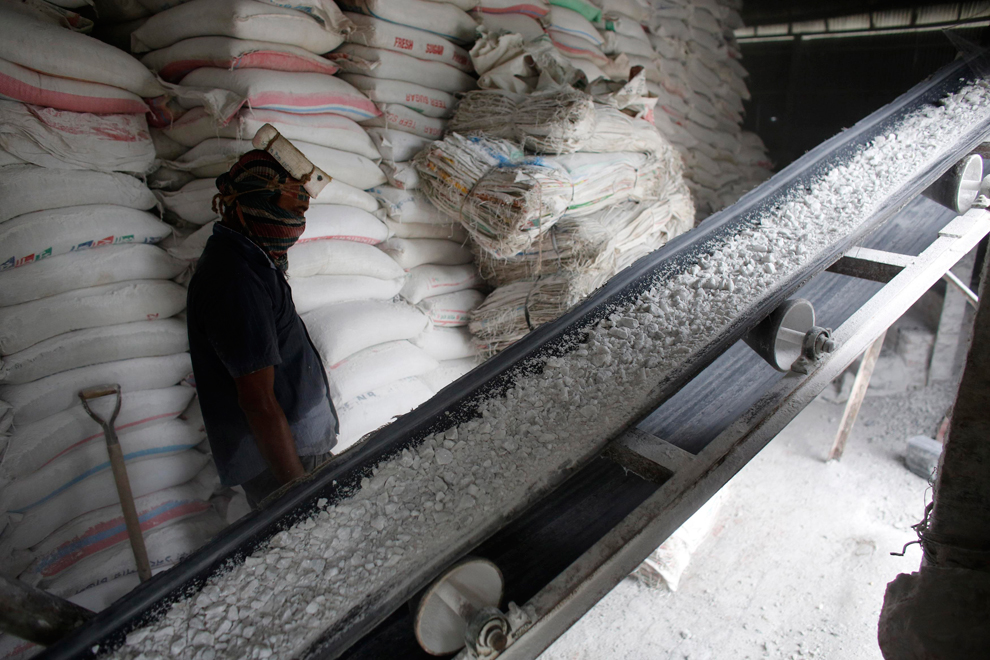
6
A
man works in a stone crushing factory at Burimari in Lalmonirhat
district, Bangladesh on July 9. The stone crushing industry in the
Burimari land port area of Lalmonirhat, in the north of Bangladesh,
produces lime powder for various industrial purposes. According to a
report by the Bangladesh Institute of Labour Studies, those working in
the industry run the risk of contracting silicosis, an incurable lung
disease caused by inhalation of silica dust. (Andrew Biraj/Reuters) #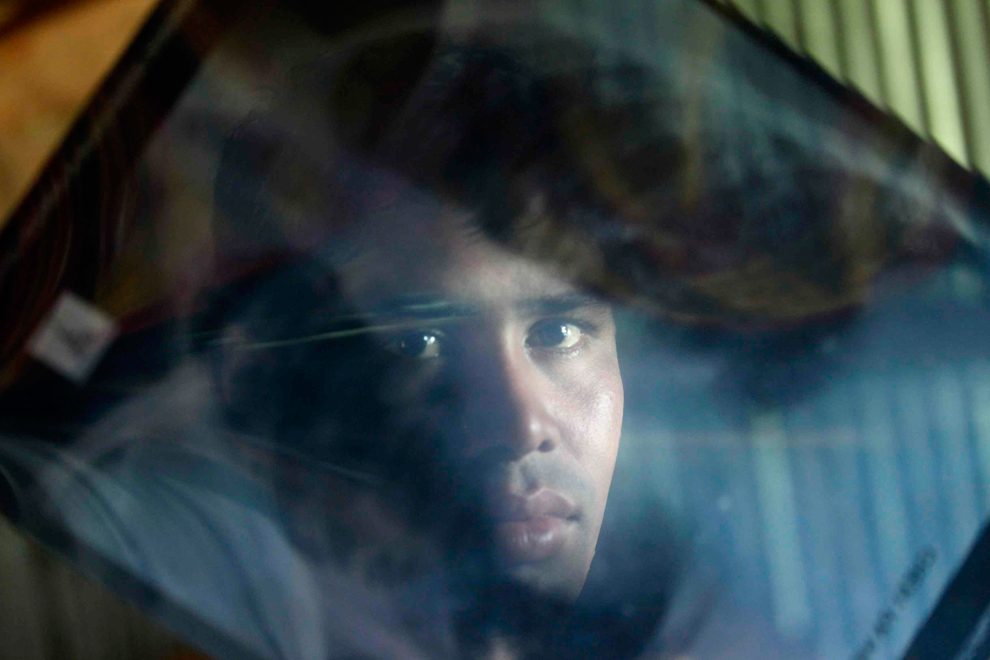
7
Momin
Ali, 26, shows an x-ray film of his lungs inside his house at Burimari
in Lalmonirhat district, Bangladesh July 9. Ali says he suffers from
silicosis, an incurable lung disease caused by inhalation of silica
dust, as he used to work in a stone crushing factory for two and half
years. (Andrew Biraj/Reuters) #
8
A
worker helps his colleague to lift a bucket of limestone as they work
in a stone crushing factory at Burimari in Lalmonirhat district,
Bangladesh July 9. (Andrew Biraj/Reuters) #
9
A
worker's sandals are seen inside a stone crushing factory at Burimari
in Lalmonirhat district, Bangladesh July 9. (Andrew Biraj/Reuters)#
10
Montu
Mia, 40, lies on a bed as he describes the condition of his lungs
inside his house in Burimari in Lalmonirhat district, Bangladesh July 9.
Montu Mia says he suffers from silicosis, an incurable lung disease
caused by inhalation of silica dust as he used to work in a stone
crushing factory for five years.(Andrew Biraj/Reuters) #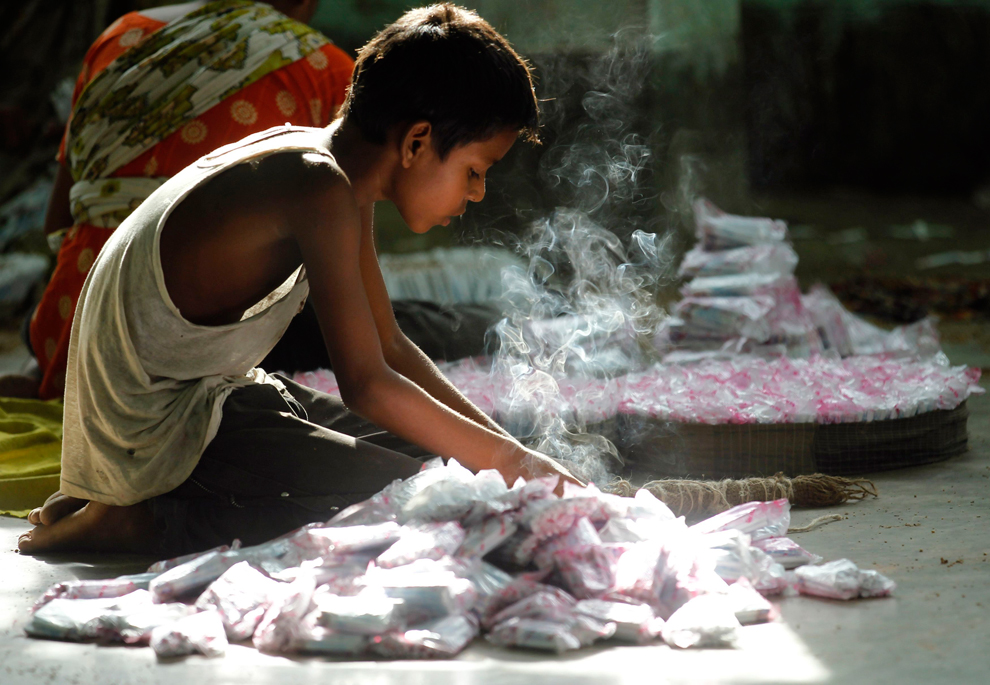
11
A
child packs up cigarettes in a small bidi (cigarette) factory at
Haragach in Rangpur district, Bangladesh July 13. According to a 2012
study by US-based NGO, Campaign for Tobacco-Free Kids, over 45,000
people in Bangladesh are employed in manufacturing inexpensive
cigarettes known as bidis and this number includes many women and
children working in household based establishments where they make low
wages and live in poverty. (Andrew Biraj/Reuters) #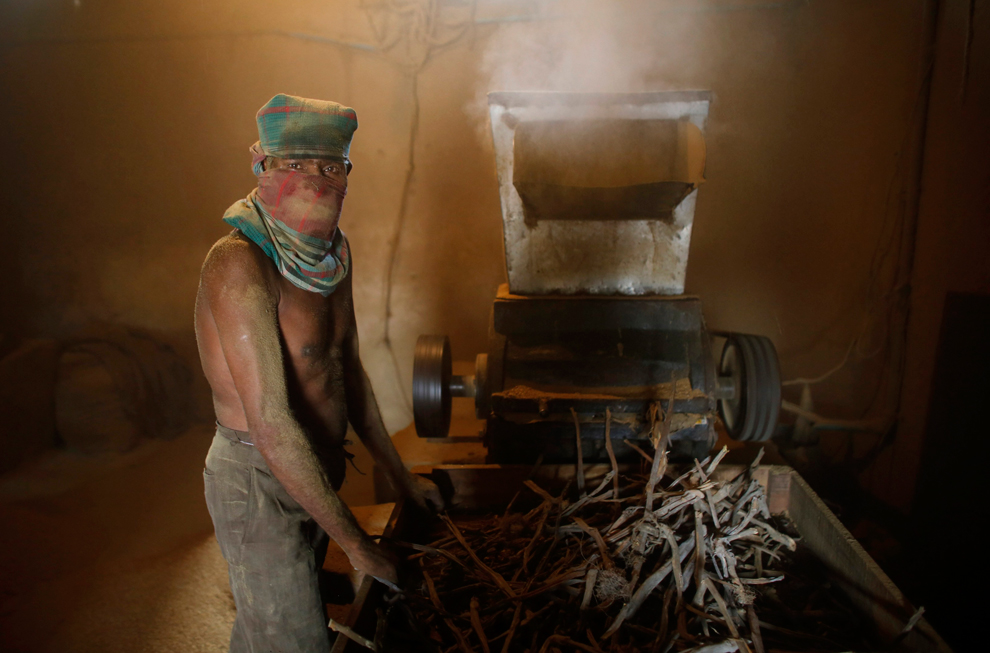
12
A
worker crushes locally grown tobacco in a grinding machine in a small
'bidi' (cigarette) factory at Haragach in Rangpur district, Bangladesh
July 11. A 2011 research paper about bidi workers in Bangladesh,
published in the journal Tobacco Control, says that working conditions
can involve poor ventilation and exposure to tobacco dust, which can
cause a range of health problems including respiratory and skin
diseases. (Andrew Biraj/Reuters)#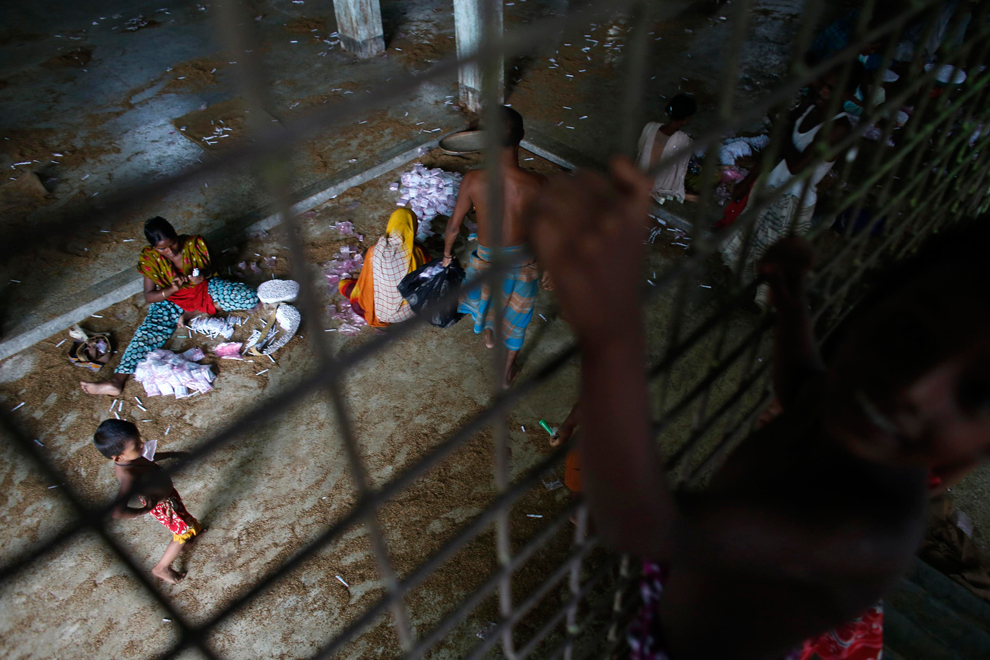
13
Workers
fill up empty cigarettes manually with locally grown tobacco in a small
'bidi' (cigarette) factory at Haragach in Rangpur district, Bangladesh
July 13.(Andrew Biraj/Reuters) #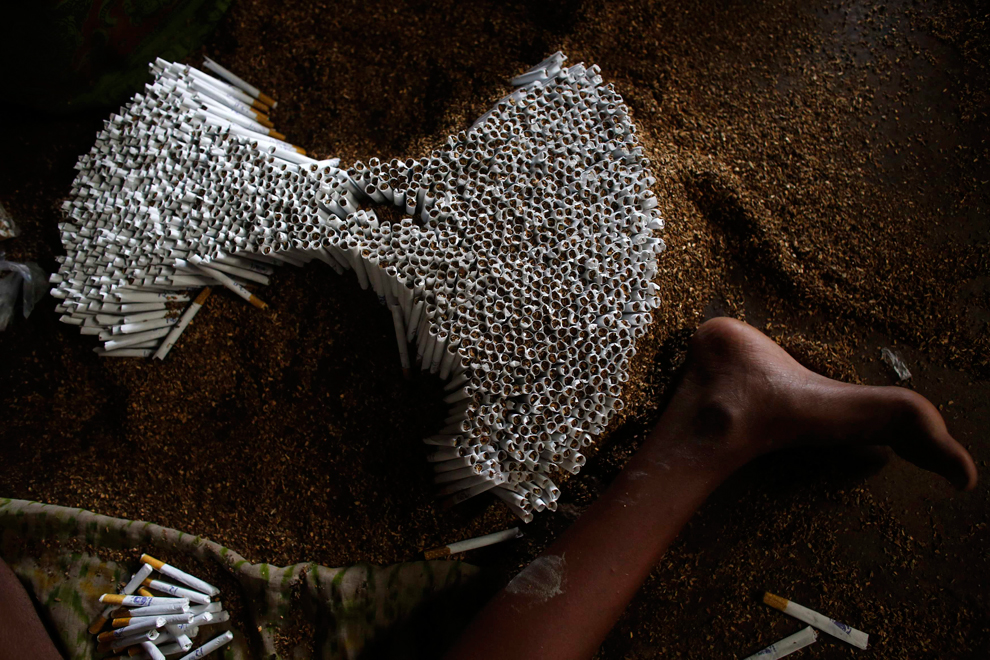
14
A
child fills up empty cigarettes manually with locally grown tobacco in a
small bidi (cigarette) factory at Haragach in Rangpur district,
Bangladesh July 13. (Andrew Biraj/Reuters) #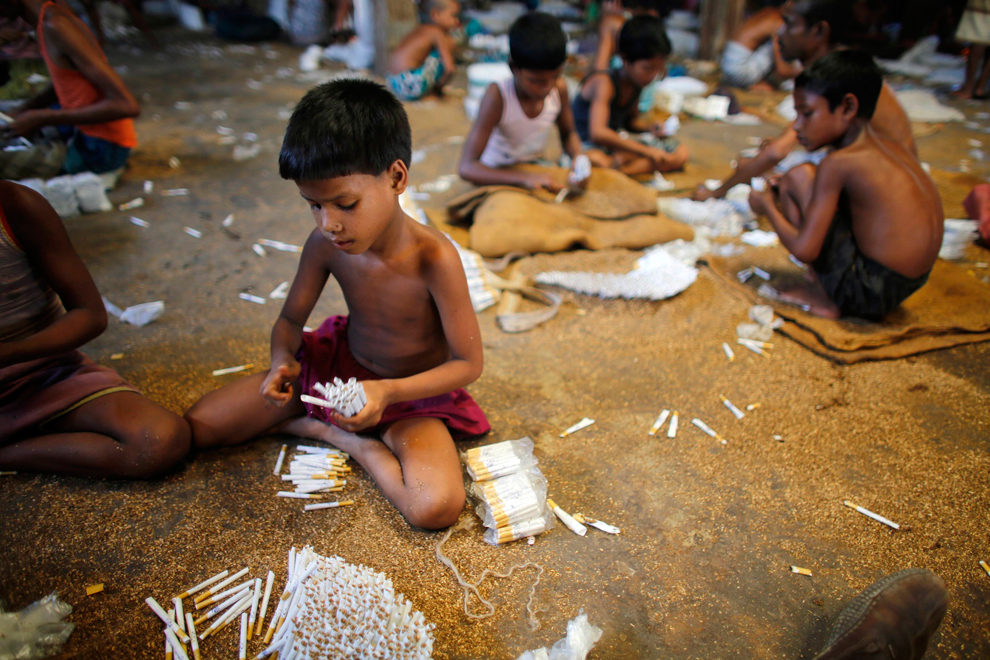
15
Children
fill up empty cigarettes manually with locally grown tobacco in a small
bidi (cigarette) factory at Haragach in Rangpur district, Bangladesh
July 11.(Andrew Biraj/Reuters)#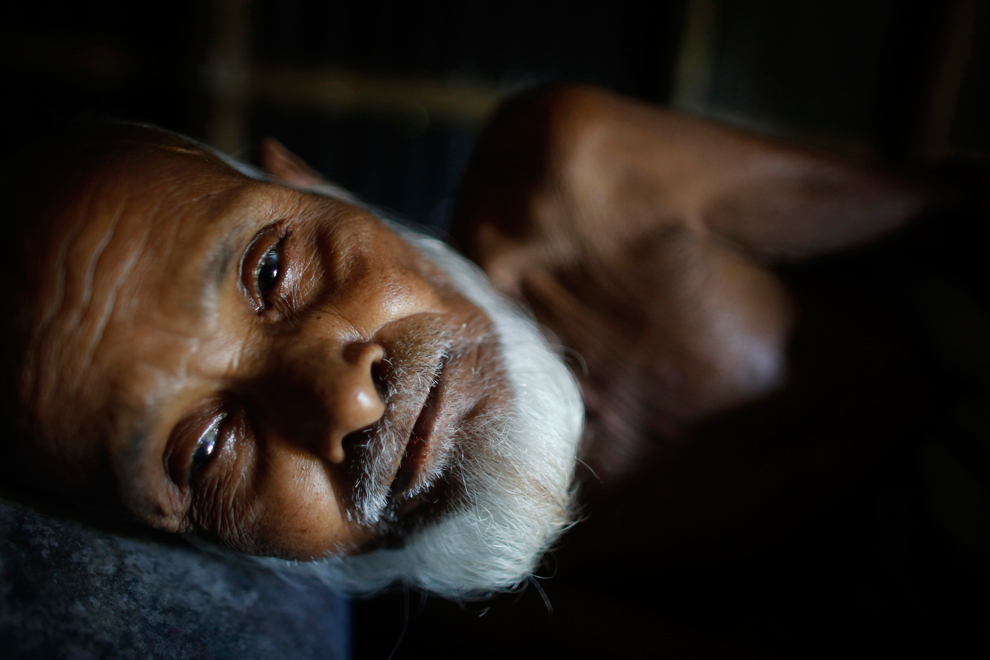
16
Fazal
Uddin, 80, lies on a bed as he suffers from asthma, in Haragach,
Rangpur district, Bangladesh July 11. According to Uddin's family, he
became sick as he used to work in a 'bidi' (cigarrette) factory for 8-10
years.(Andrew Biraj/Reuters) #
17
Workers
use a makeshift ladder to board a boat as they come back to shore after
finishing work at a ship-breaking yard in Chittagong, Bangladesh July
16. Bangladesh is dependent on ship-breaking for its domestic steel
requirements. (Andrew Biraj/Reuters)#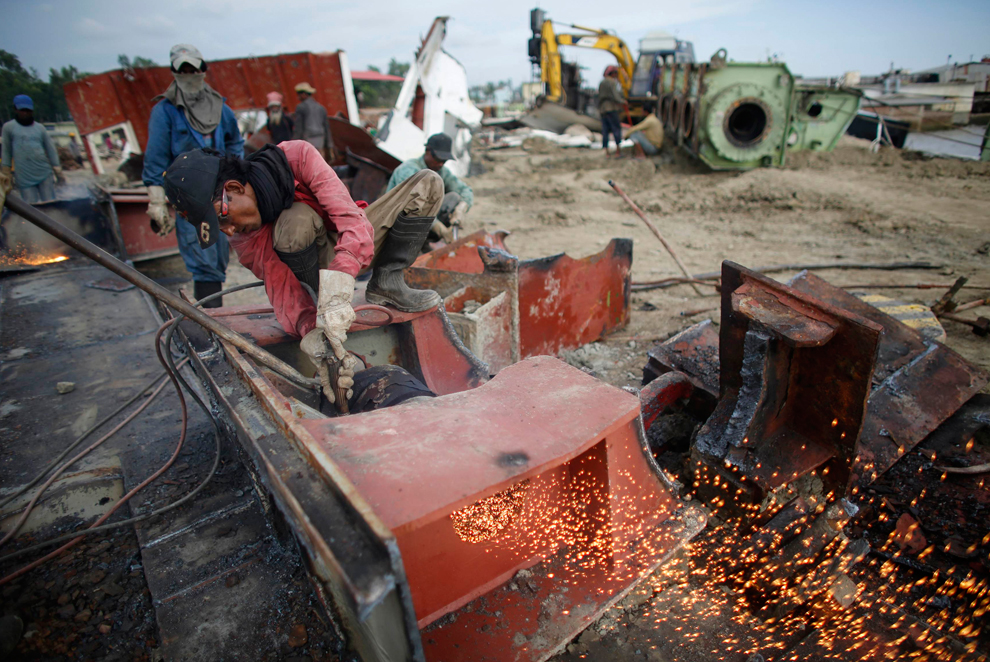
18
A
worker welds part of a ship at a ship-breaking yard in Chittagong,
Bangladesh July 16, 2013. According to a report by the Bangladesh
Institute of Labour Studies, around 30,000 workers are employed in the
ship-breaking industry in Chittagong, a highly polluted coastal belt of
around 20 km (12.4 miles), and environmental organizations have said
that the number of accidents and casualties at the yard is believed to
be the highest in the region. (Andrew Biraj/Reuters)#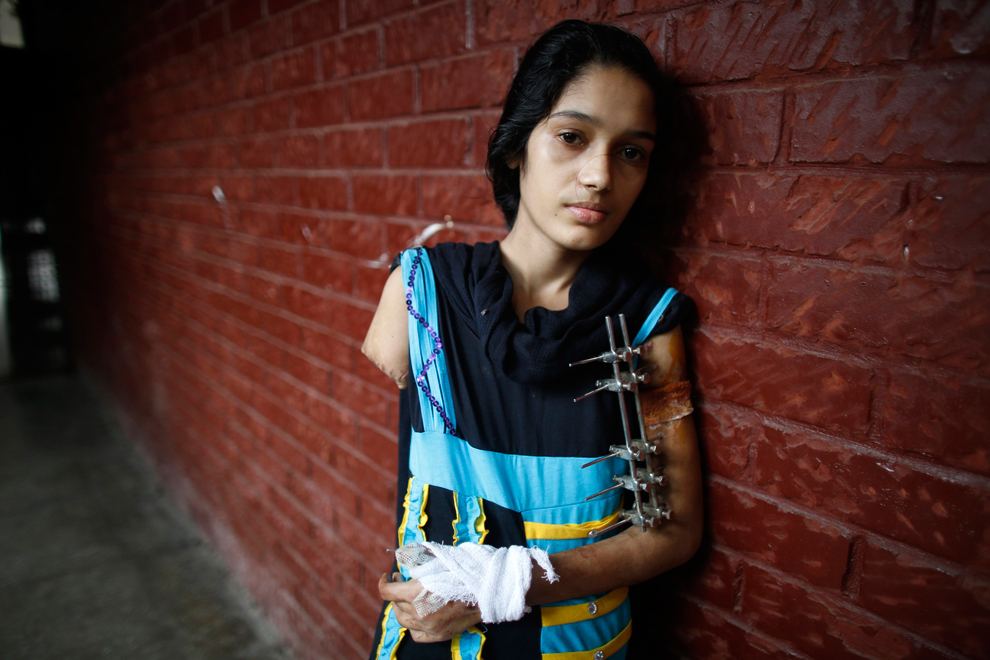
19
Rasheda,
15, who used to work for Abul Khair Steel Mills Ltd, stands outside a
ward of the National Institute of Traumatology and Orthopaedic
Rehabilitation in Dhaka, July 4. Rasheda said she lost one of her hands
and another one has been critically injured in an accident while working
for the steel company in Chittagong, Bangladesh.(Andrew Biraj/Reuters) #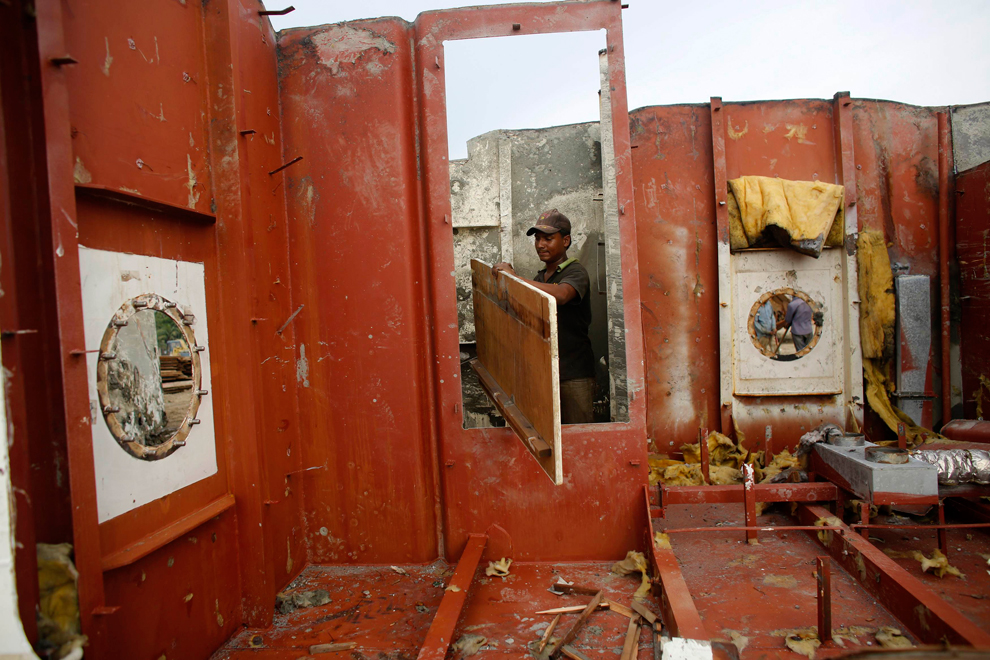
20
A
man works inside a wrecked section of a ship at a ship-breaking yard in
Chittagong, Bangladesh July 16. Bangladesh is dependent on
ship-breaking for its domestic steel requirements. (Andrew
Biraj/Reuters) #
Photo-journalism - Fotoperiodismo: Bangladesh - Industry's Victims - The Boston Globe - 21 photos - 08.13
Ricardo M Marcenaro - Facebook
Operative blogs of The Solitary Dog:
solitary dog sculptor:
http://byricardomarcenaro.blogspot.com
Solitary Dog Sculptor I:
http://byricardomarcenaroi.blogspot.com
Para:
comunicarse conmigo,
enviar materiales para publicar,
propuestas:
marcenaroescultor@gmail.com
For:
contact me,
submit materials for publication,
proposals:
marcenaroescultor@gmail.com
Diario La Nación
Argentina
Cuenta Comentarista en el Foro:
Capiscum
My blogs are an open house to all cultures, religions and countries. Be a follower if you like it, with this action you are building a new culture of tolerance, open mind and heart for peace, love and human respect.
Thanks :)
Mis blogs son una casa abierta a todas las culturas, religiones y países. Se un seguidor si quieres, con esta acción usted está construyendo una nueva cultura de la tolerancia, la mente y el corazón abiertos para la paz, el amor y el respeto humano.
Gracias :)

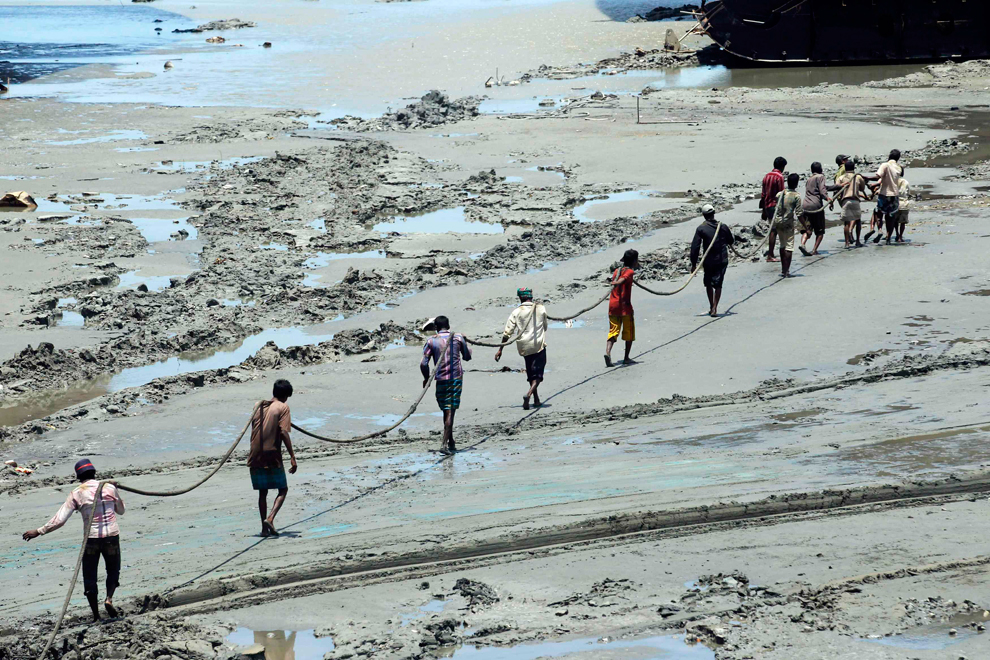

Comments (0)
Publicar un comentario